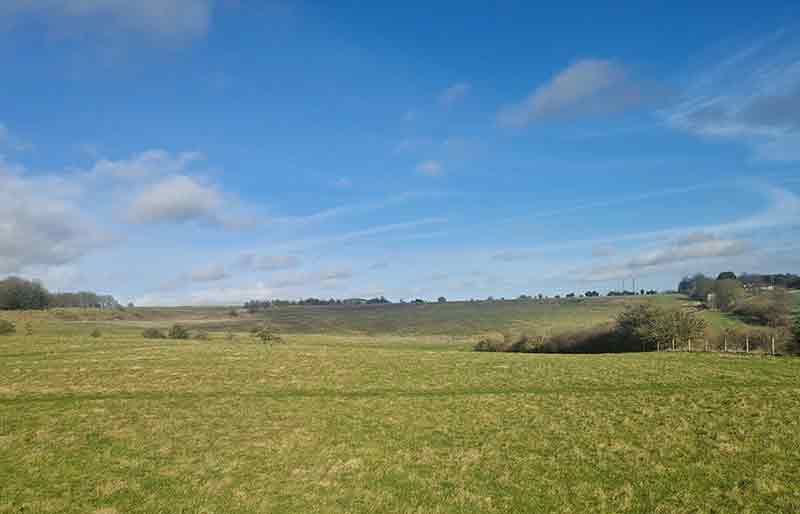Durrington Walls

King Arthur, the legendary British king, stands as a towering figure in literature and folklore. Yet, despite his enduring presence in our imaginations, there's no direct historical or literary connection between him and Durrington Walls, a Neolithic henge monument in Wiltshire, England. This vast temporal and factual distance, however, hasn't stopped the site from echoing in the Arthurian tapestry, fueled by its age, location, and enigmatic nature.
The sheer antiquity of Durrington Walls, erected around 4,500 years ago, throws a cloak of mystery over its origins. This vast gap between its construction and the emergence of Arthurian legends might preclude a direct connection, yet it adds an intriguing layer of allure. Standing within its imposing circle, one can't help but be transported not just across physical space but across millennia, where echoes of a forgotten world resonate with the mythical Camelot, both ancient and timeless.
Further deepening the connection is Durrington Walls' location. Nestled amidst other prehistoric monuments like Stonehenge and Avebury, it finds itself at the heart of Arthurian lore. This geographical proximity blurs the lines between historical reality and imagined landscapes. The very stones, weathered and worn by time, seem to whisper tales of giants and magic, inviting comparisons to the mythical Britain of Arthur's reign.
While no historical evidence binds Durrington Walls to Arthur, the absence of facts fuels speculation. Some see its impressive circular structure and possible role as a ceremonial center as a precursor to Camelot, a prototypical court for a future king. Others weave tales of Merlin, the sorcerer, transporting stones for its construction, or link the site to Guinevere, the queen seeking solace in its shadows. These stories, though lacking factual basis, add another layer to the monument's mystique, enriching its cultural tapestry and reminding us that myths often thrive in the fertile ground of the unknown.
Beyond historical records, Durrington Walls' existence transcends mere factual documentation. Its evocative atmosphere, steeped in mystery, inspires artists and writers to craft fictional narratives. These creative endeavors, while not bound by historical accuracy, breathe life into the monument, fostering a deeper connection with the Arthurian mythos and keeping the legend alive. Mary Stewart's "The Crystal Cave," for example, features Durrington Walls as a key setting in Arthur's life, while Marion Zimmer Bradley's "The Mists of Avalon" mentions its association with Guinevere. These fictional portrayals, while not historical truths, contribute to the ongoing cultural conversation surrounding both the monument and the legend.
The lack of concrete historical links doesn't diminish the power of Durrington Walls. It remains a place open to individual interpretation. Visitors can wander its ancient pathways, ponder its purpose, and draw their own connections to the Arthurian legend. This personal engagement adds a unique layer to the experience, making the monument more than just stones and earth–it becomes a story waiting to be told. Whether one sees it as a potential precursor to Camelot, a site touched by legendary figures, or simply a window into a forgotten past, Durrington Walls serves as a reminder that the power of stories lies not just in their factual accuracy but in their ability to spark imagination and connect us to the past, both real and imagined.
In conclusion, Durrington Walls might not hold a direct connection to King Arthur in the traditional sense. However, its age, location, and enduring mystery invite speculation and artistic expression, weaving it into the fabric of the Arthurian tapestry. It is a place where history and imagination converge, whispering not the echoes of a specific legend, but the timeless allure of myth and the power of human storytelling. As we stand within its ancient circle, we are reminded that the stories we tell ourselves, both grounded in facts and fueled by imagination, are what truly shape our understanding of the past and its enduring influence on the present.
Arthurian Legend Summarised
No direct link
Precedes Arthurian legends by millennia, but...
Ancient allure
Antiquity resonates with Camelot's mythical origins.
Mythical landscape
Location near Stonehenge & Avebury fuels imaginative links.
Speculative connections
Circular structure seen as potential precursor to Camelot.
Artistic inspiration
Evocative atmosphere inspires fictional narratives linking it to Arthur.
Open to interpretation
Lack of facts allows visitors to draw their own connections.
Beyond history
Cultural significance extends beyond historical accuracy.
Power of storytelling
Stories, factual or fictional, shape our understanding of the past.
Tours of Durrington Walls
Unwind in a chauffeured car, explore with an experienced guide, on a Tour of Durrington Walls. Combine your private tour with other places of King Arthur interest such as Stonehenge and Amesbury, or other iconic UK destinations.
More Information
Location: Durrington Walls is located in the Stonehenge World Heritage Site in England. It lies 2 miles north-east of Stonehenge in the parish of Durrington, just north of Amesbury in Wiltshire.
More reading:

